Thessaloniki Greece Travel Guide A Vagabond Life
Thessaloniki, Greece’s second-largest city, is a captivating destination that seamlessly blends rich history with vibrant modernity. Situated along the Thermaic Gulf, this bustling port city offers a unique mix of ancient ruins, Byzantine churches, Ottoman relics, and contemporary attractions. Founded in 315 BC by King Cassander of Macedon, Thessaloniki has been a vital cultural and commercial hub for millennia, influenced by Macedonian, Roman, Byzantine, and Ottoman empires. This diverse heritage is palpable in its architecture, cuisine, and traditions, making Thessaloniki a fascinating place to explore.
Visitors to Thessaloniki can immerse themselves in its historical depth by visiting landmarks like the iconic White Tower, the Roman Rotunda, and the expansive Archaeological Museum. The Upper Town (Ano Poli) charms with its traditional architecture and breathtaking city views, while the bustling Aristotelous Square is the heart of the city’s social life. Food enthusiasts will relish the vibrant Ladadika district, renowned for its excellent tavernas and lively nightlife.
Beyond its historical and cultural riches, Thessaloniki boasts a picturesque waterfront, ideal for leisurely strolls and stunning sunsets. With its warm hospitality, dynamic atmosphere, and rich tapestry of sights and experiences, Thessaloniki promises an unforgettable journey for every traveler.
Thessaloniki Greece Map
Getting To Thessaloniki Greece
Thessaloniki, Greece’s second-largest city, is a vibrant destination known for its rich history, cultural attractions, and dynamic lifestyle. Whether you’re planning a vacation or a business trip, getting to Thessaloniki is relatively straightforward, thanks to its well-connected transportation network. Here’s a comprehensive guide on how to reach Thessaloniki from various locations around the world.
By Air
Thessaloniki International Airport “Makedonia” (SKG): The primary gateway to the city is Thessaloniki International Airport “Makedonia,” located about 15 kilometers southeast of the city center. The airport is well-connected to numerous international and domestic destinations, making it a convenient entry point for travelers.
- International Flights: Many major airlines operate direct flights to Thessaloniki from various European cities, including London, Paris, Rome, Berlin, and Istanbul. During the summer, there are also seasonal flights from North America, the Middle East, and other regions.
- Domestic Flights: Frequent domestic flights connect Thessaloniki with Athens and other Greek cities, such as Heraklion, Rhodes, and Corfu.
Getting to the City Center from the Airport:
- By Bus: The OASTH bus line 01X runs 24/7 between the airport and the city center. The journey takes approximately 40 minutes.
- By Taxi: Taxis are available outside the airport terminal and offer a convenient, though more expensive, option to reach your destination.
- By Car: Car rental services are available at the airport, allowing for flexible travel around Thessaloniki and its surroundings.
By Train
Greek Railways (OSE): Thessaloniki’s main railway station is well-connected to the national railway network, providing direct routes to major Greek cities.
- From Athens: The intercity (IC) train from Athens to Thessaloniki is a popular option, offering a scenic journey through the Greek countryside. The trip takes about 4-5 hours.
- International Trains: Thessaloniki is connected by rail to several neighboring countries, including Bulgaria (Sofia), North Macedonia (Skopje), and Serbia (Belgrade). These routes provide a convenient and often scenic way to travel to Thessaloniki.
By Bus
Intercity Buses (KTEL): KTEL buses are an affordable and efficient way to travel within Greece. Thessaloniki’s main bus station, KTEL Makedonia, offers services to and from numerous cities and towns across the country.
- From Athens: Multiple daily buses run between Athens and Thessaloniki, with a journey time of approximately 6 hours.
- From Neighboring Countries: Several international bus companies operate routes connecting Thessaloniki with cities in Albania, Bulgaria, North Macedonia, and Turkey.
By Car
Driving to Thessaloniki: Thessaloniki is accessible by several major highways, making it easy to reach by car from different parts of Greece and neighboring countries.
- From Athens: The E75 highway connects Athens to Thessaloniki, with a driving time of around 5-6 hours.
- From Other Balkan Countries: Thessaloniki is well-connected by road to Albania, Bulgaria, North Macedonia, and Turkey, making it a convenient destination for regional road trips.
Parking in Thessaloniki: Parking can be challenging in the city center, but there are several public parking lots and garages available. It’s advisable to check parking options in advance if you’re planning to drive into the city.
By Ferry
Thessaloniki Port: While Thessaloniki is primarily a cargo port, it also serves passenger ferries. During the summer months, there are ferry services connecting Thessaloniki with the Northern Aegean islands and other parts of Greece, offering a scenic and leisurely travel option.visit destination.
Getting Around Thessaloniki Greece
Thessaloniki, Greece’s vibrant second-largest city, offers an excellent blend of historical sites, bustling markets, and picturesque seaside promenades. Whether you’re visiting for a short stay or planning a longer exploration, understanding how to get around Thessaloniki is crucial for making the most of your trip. Here’s a comprehensive guide to navigating this dynamic city.
Public Transportation
1. Buses (OASTH): Thessaloniki’s public bus system, operated by OASTH, is the primary mode of public transportation in the city. The network is extensive, covering most areas, including the city center, suburbs, and nearby towns.
- Routes and Timetables: Buses run frequently, especially on popular routes through the city center. Schedules and route maps are available online and at major bus stops.
- Tickets: Tickets can be purchased at kiosks, OASTH ticket booths, and on the buses (exact change required). There are single-ride tickets, day passes, and multi-day passes available.
- Special Lines: The 01X and 01N lines connect Thessaloniki International Airport to the city center, offering convenient 24-hour service.
2. Thessaloniki Metro: Currently under construction, the Thessaloniki Metro is expected to greatly enhance the city’s public transportation network. Upon completion, it will provide fast and efficient transit across key areas of the city. Until then, buses remain the primary mode of public transport.
Taxis
1. Availability and Fares: Taxis are plentiful in Thessaloniki and can be hailed on the street, booked via phone, or reserved through various mobile apps. They are a convenient way to get around, especially for short distances or when carrying luggage.
- Fare Structure: Taxis in Thessaloniki are metered. Fares start with a base rate and increase based on distance traveled. Additional charges may apply for services such as airport trips or late-night rides.
- Tips: While tipping is not mandatory, it’s customary to round up the fare or leave a small tip for good service.
Car Rentals
1. Rental Services: Several international and local car rental companies operate in Thessaloniki, offering a wide range of vehicles to suit your needs. Renting a car provides flexibility, especially if you plan to explore areas outside the city.
- Requirements: To rent a car, you typically need a valid driver’s license, a credit card, and an international driving permit (IDP) if your license is not in Greek or English.
- Driving Tips: Thessaloniki’s city center can be congested, and parking can be challenging. Consider using parking garages or designated parking areas.
Biking and Walking
1. Biking: Thessaloniki is increasingly becoming a bike-friendly city, with dedicated bike lanes and rental services available.
- Bike Rentals: Bikes can be rented from various locations throughout the city. Some hotels also offer bike rentals to their guests.
- Bike Paths: Enjoy scenic rides along the waterfront promenade and through parks. Thessaloniki’s relatively flat terrain makes biking an enjoyable way to see the city.
2. Walking: Many of Thessaloniki’s attractions are within walking distance of each other, particularly in the city center.
- Walking Tours: Consider joining a guided walking tour to learn about the city’s history and discover hidden gems.
- Pedestrian Areas: Aristotelous Square, the waterfront, and the Upper Town (Ano Poli) are perfect for leisurely strolls.
Things To See & Do In Thessaloniki Greece
Discover Thessaloniki: Top Attractions in Greece’s Cultural Hub
Thessaloniki, Greece’s second-largest city, is a vibrant mix of ancient history and modern culture. Nestled along the Thermaic Gulf, this bustling port city offers a rich tapestry of historical landmarks, lively neighborhoods, and beautiful vistas. Whether you’re a history buff, foodie, or beach lover, Thessaloniki has something to offer. Here are the top attractions you shouldn’t miss.
A Brief History of Thessaloniki
Founded in 315 BC by King Cassander of Macedon, Thessaloniki was named after his wife, Thessalonike, the sister of Alexander the Great. Throughout its long history, the city has been a significant cultural and commercial hub, playing a crucial role in the Macedonian, Roman, Byzantine, and Ottoman empires. Its strategic location on the Aegean Sea made it a crossroads for trade and a melting pot of cultures. The city’s diverse heritage is reflected in its architecture, cuisine, and traditions, making it a fascinating destination for history enthusiasts and travelers alike.
The White Tower
The White Tower is Thessaloniki’s most iconic landmark, a symbol of the city’s rich and tumultuous history. Built by the Ottomans in the 15th century on the site of an older Byzantine tower, it was initially used as a fortification and later as a notorious prison. The tower’s grim past earned it the nickname “The Tower of Blood” due to the executions that took place within its walls.
Today, the White Tower houses a museum that offers a fascinating journey through Thessaloniki’s history, from ancient times to the modern era. Visitors can explore exhibits featuring artifacts, multimedia presentations, and interactive displays. The highlight of any visit is the climb to the top, where you are rewarded with panoramic views of the city and the Thermaic Gulf. The waterfront promenade below is perfect for a leisurely stroll, making the White Tower a must-visit for history enthusiasts and casual tourists alike.
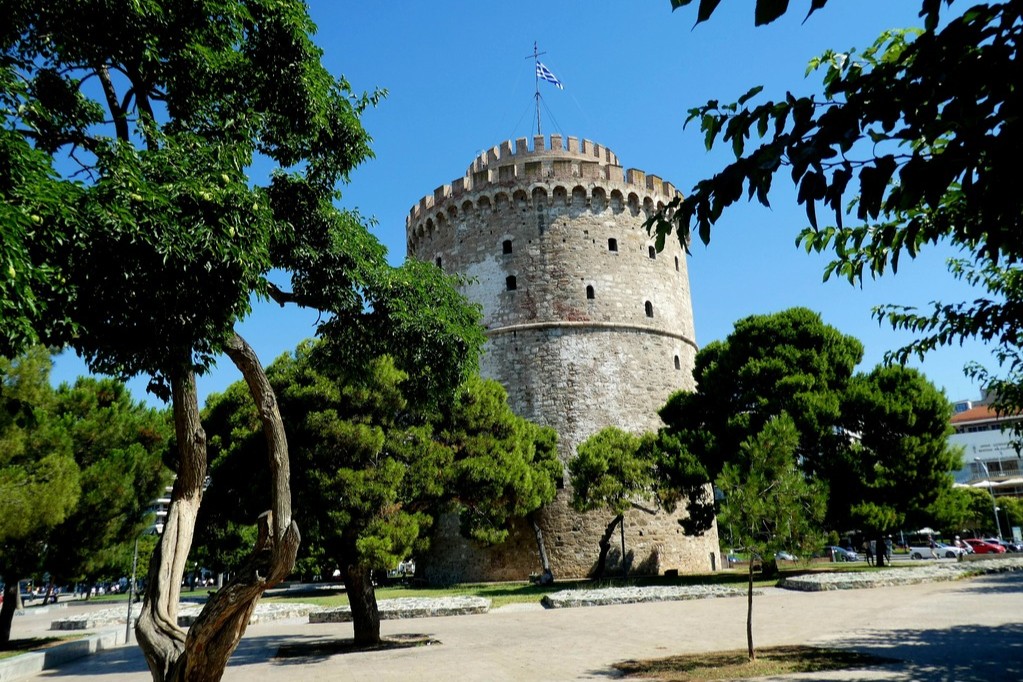
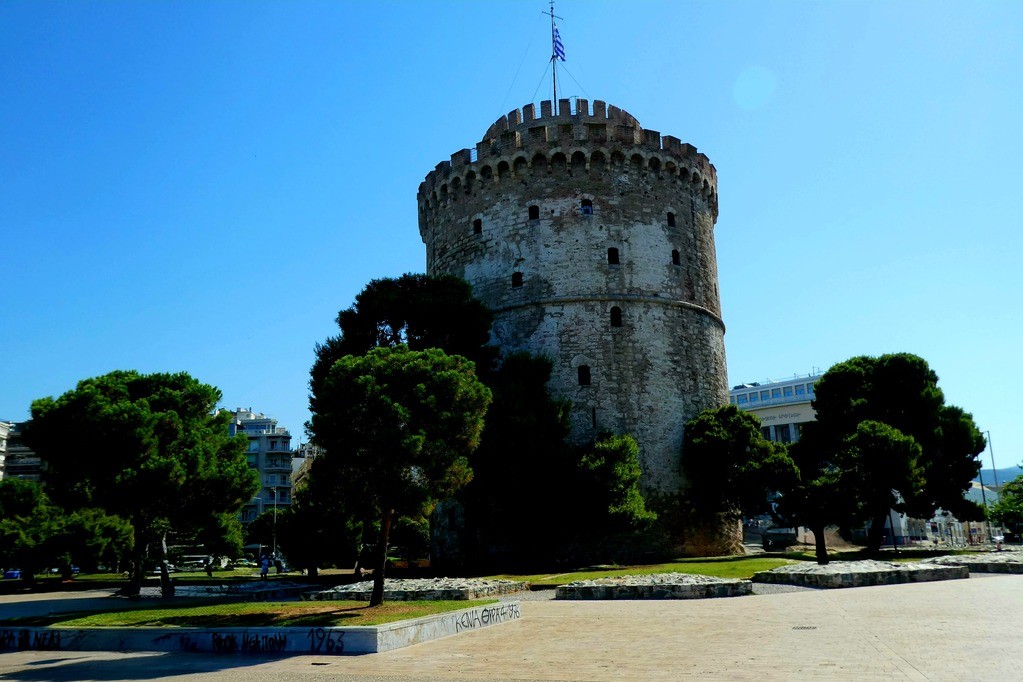
Archaeological Museum of Thessaloniki
The Archaeological Museum of Thessaloniki is one of Greece’s most important museums, home to an extensive collection of artifacts from the Macedonian, Hellenistic, and Roman periods. The museum provides a comprehensive overview of the region’s rich historical and cultural heritage.
Key highlights include the stunning gold grave goods from the royal tombs of Vergina, believed to be the burial site of the Macedonian royal family, including Philip II, father of Alexander the Great. The museum also showcases intricate mosaics, statues, and everyday items that paint a vivid picture of life in ancient Macedonia. Interactive exhibits and well-curated displays make the history accessible and engaging for visitors of all ages.
The museum’s modern design and spacious galleries provide a pleasant and informative experience, making it a must-see for anyone interested in the ancient world. Located close to the city center, it’s easily accessible and can be combined with visits to other nearby attractions.
Rotunda and Arch of Galerius
The Rotunda of Galerius is one of Thessaloniki’s most remarkable ancient monuments. Originally constructed in the early 4th century by the Roman Emperor Galerius, it was intended to be his mausoleum. However, it never served this purpose, as Galerius was buried elsewhere. Over the centuries, the Rotunda has been repurposed several times, transforming from a pagan temple to a Christian church and later to a mosque during the Ottoman period.
Today, the Rotunda stands as a testament to the city’s layered history, featuring a mix of architectural styles and influences. Inside, visitors can admire the impressive domed interior adorned with early Christian mosaics that have remarkably survived through the ages. These mosaics are among the oldest and most significant examples of early Christian art in the world.
The Rotunda is part of a larger complex that includes the Arch of Galerius, another significant Roman monument located nearby. Together, they offer a fascinating glimpse into Thessaloniki’s past as a major city of the Roman Empire.
The Arch of Galerius: A Monument to Roman Triumph
The Arch of Galerius, also known as the Kamara, is one of Thessaloniki’s most impressive ancient landmarks. Erected in 298–299 AD, this triumphal arch was built to commemorate the Roman Emperor Galerius’s victory over the Persian Sassanid Empire and his capture of their capital, Ctesiphon.
The arch originally formed part of a larger complex that included the Rotunda and Galerius’s palace, creating a monumental gateway into the city. Although only a portion of the original structure survives today, what remains provides a fascinating glimpse into Roman architectural and artistic prowess.
The surviving sections of the arch feature richly detailed reliefs that depict scenes of Galerius’s military campaigns and victories. These reliefs are celebrated for their intricate craftsmanship and historical significance, offering valuable insights into Roman imperial propaganda and the emperor’s perceived divine endorsement.
The arch’s position in the heart of modern Thessaloniki makes it easily accessible to visitors. It stands near the busy Egnatia Street, providing a striking contrast between the ancient and contemporary aspects of the city.
As one of Thessaloniki’s most photographed landmarks, the Arch of Galerius is not just a historical monument but also a symbol of the city’s enduring legacy. Whether you are a history enthusiast or a casual visitor, the arch is a must-see attraction that encapsulates the grandeur of the Roman era and the rich tapestry of Thessaloniki’s past.
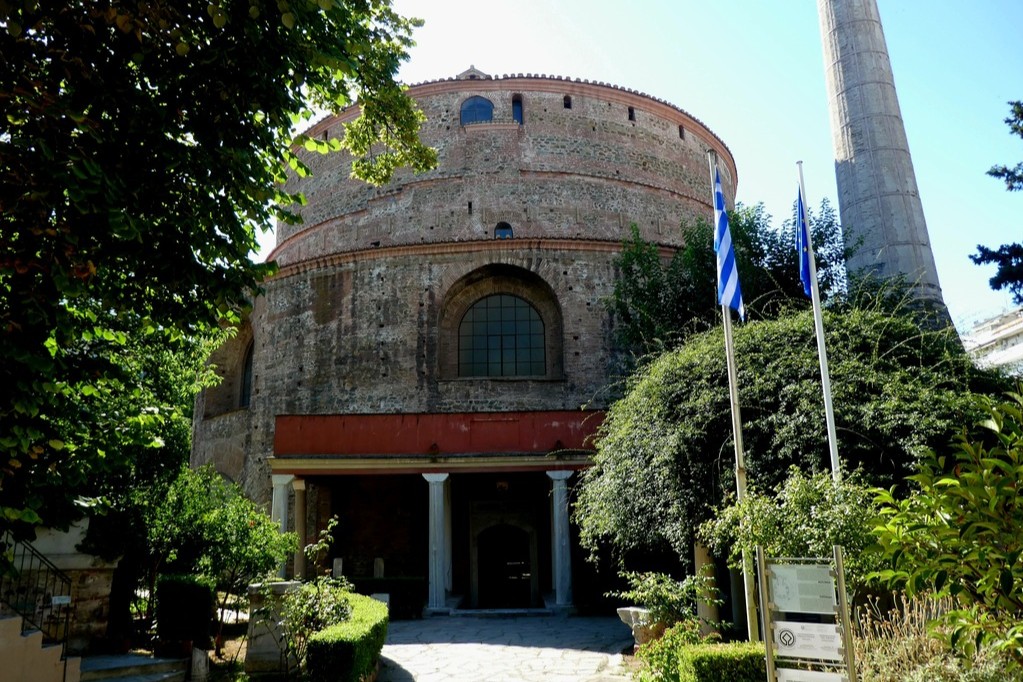
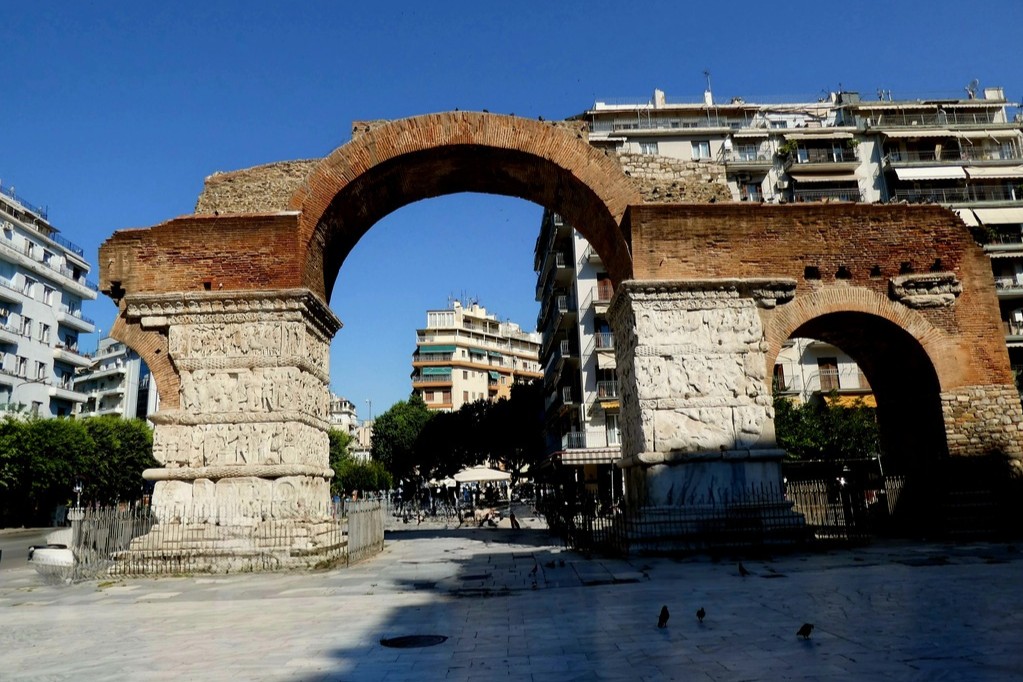
Ano Poli (Upper Town)
Ano Poli, or the Upper Town, is one of the few areas in Thessaloniki that survived the Great Fire of 1917, which destroyed much of the city. This historic district offers a charming contrast to the more modern parts of Thessaloniki, with its traditional Macedonian architecture, narrow cobblestone streets, and stunning views over the city and the sea.
Strolling through Ano Poli feels like stepping back in time. The area is filled with old mansions, quaint houses, and Byzantine churches, including the Church of Osios David and the Church of Saint Nicholas Orphanos, both UNESCO World Heritage sites. The Byzantine walls that once surrounded the city are also a prominent feature, providing a tangible connection to Thessaloniki’s medieval past.
Ano Poli is also known for its vibrant cultural scene, with numerous cafes, tavernas, and small shops that offer a taste of local life. It’s the perfect place to enjoy traditional Greek cuisine and soak in the authentic atmosphere of Thessaloniki.
Ladadika District
Ladadika is one of Thessaloniki’s most vibrant neighborhoods, known for its lively nightlife, excellent dining options, and colorful buildings. Once a bustling commercial district, particularly for the trade of olive oil (from which it gets its name), Ladadika was left neglected for many years before being revitalized in the late 20th century.
Today, the area is a popular destination for both locals and tourists. Its narrow streets are lined with tavernas, bars, and restaurants offering a wide range of cuisines, from traditional Greek dishes to international fare. Many of the buildings retain their historical charm, with bright facades and traditional architectural features.
Ladadika is particularly lively in the evenings when the streets fill with people enjoying the city’s vibrant social scene. Live music, cultural events, and a welcoming atmosphere make it a great place to experience Thessaloniki’s famous hospitality. Whether you’re looking for a romantic dinner spot, a lively bar, or a cozy cafe, Ladadika has something to offer.
Church of Agios Dimitrios
The Church of Agios Dimitrios is the largest church in Greece and one of Thessaloniki’s most significant religious sites. Dedicated to Saint Demetrius, the patron saint of Thessaloniki, this impressive basilica has a rich history dating back to the 4th century.
The church has been rebuilt several times due to fires and earthquakes, most recently following the Great Fire of 1917. Despite these challenges, it has retained its spiritual and architectural significance. The interior is adorned with beautiful mosaics and frescoes, many of which date back to the early Byzantine period.
One of the church’s most intriguing features is the crypt, where Saint Demetrius was supposedly imprisoned and martyred. The crypt has been excavated and now houses a small museum showcasing artifacts related to the church’s history.
The Church of Agios Dimitrios is a UNESCO World Heritage site and a must-visit for anyone interested in Byzantine art and history. Its spiritual significance and architectural beauty make it a highlight of any trip to Thessaloniki.
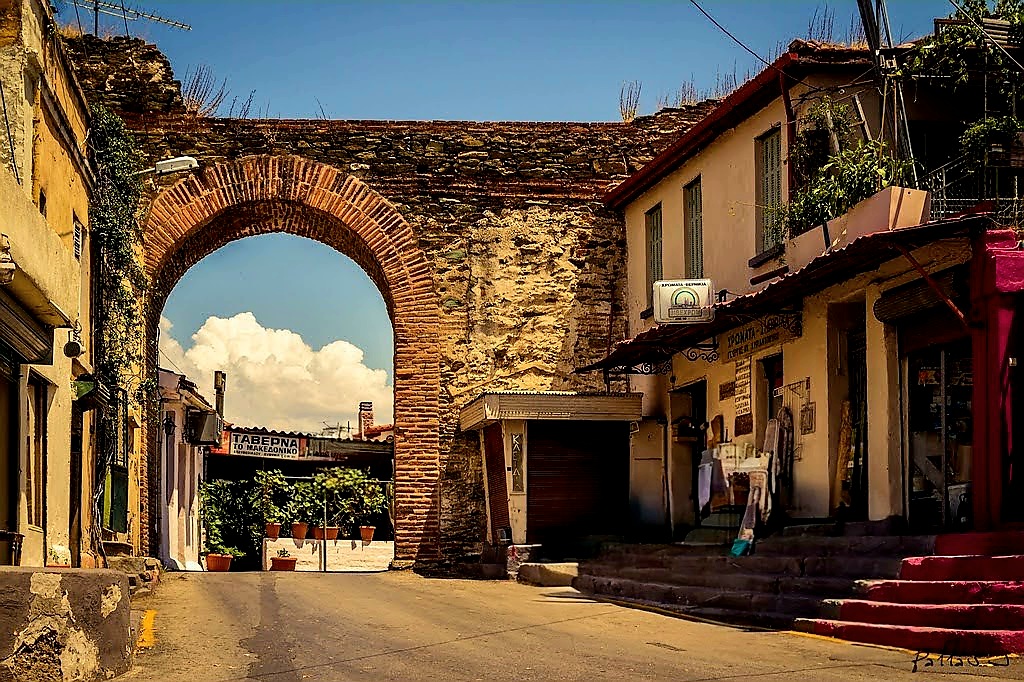
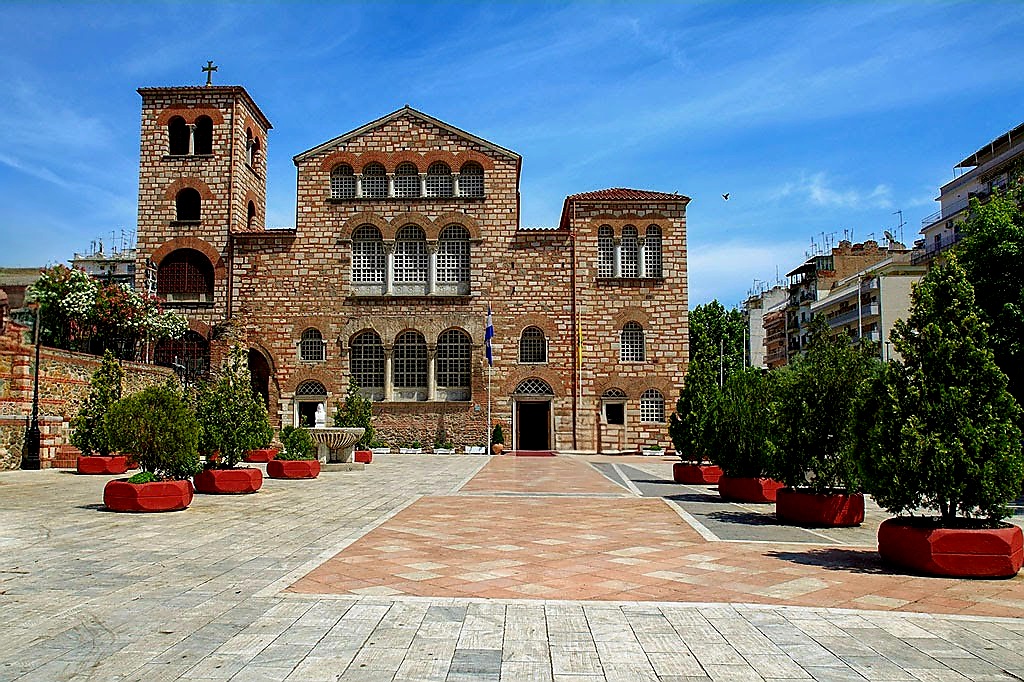
Aristotelous Square
Aristotelous Square is the beating heart of Thessaloniki, a grand public space designed by French architect Ernest Hébrard after the Great Fire of 1917. Flanked by impressive buildings and lined with cafes and restaurants, the square is a popular meeting point for locals and visitors alike.
The square’s architectural harmony and open layout make it one of the most beautiful urban spaces in Greece. It often hosts cultural events, concerts, and festivals, adding to its lively atmosphere. At its northern end, you’ll find the statue of Aristotle, the ancient Greek philosopher after whom the square is named.
From Aristotelous Square, you can enjoy stunning views down to the waterfront and the Thermaic Gulf. It’s an ideal spot for people-watching, relaxing with a coffee, or starting your exploration of the city center. Nearby, you’ll find some of Thessaloniki’s best shopping streets and many of its historical and cultural attractions.
Thessaloniki Waterfront
The Thessaloniki waterfront is a beautifully developed area that stretches from the port to the White Tower. This promenade is one of the city’s most popular recreational spots, offering stunning views of the Thermaic Gulf and Mount Olympus on clear days.
The waterfront is divided into several thematic parks, each with its own unique design and features. These parks include the Garden of Sand, the Garden of Seasons, and the Garden of Sculptures, among others. They provide a peaceful retreat from the city’s hustle and bustle and are perfect for a leisurely stroll or a relaxing break.
One of the highlights of the waterfront is the “Umbrellas” sculpture by George Zongolopoulos, a striking and photogenic piece of public art. The area is also home to numerous cafes and bars, making it a great place to enjoy a drink while watching the sunset.
The Thessaloniki waterfront is a testament to the city’s commitment to public spaces and urban regeneration, offering both residents and visitors a beautiful and accessible area to enjoy the city’s coastal setting.
e, or starting your exploration of the city center. Nearby, you’ll find some of Thessaloniki’s best shopping streets and many of its historical and cultural attractions.
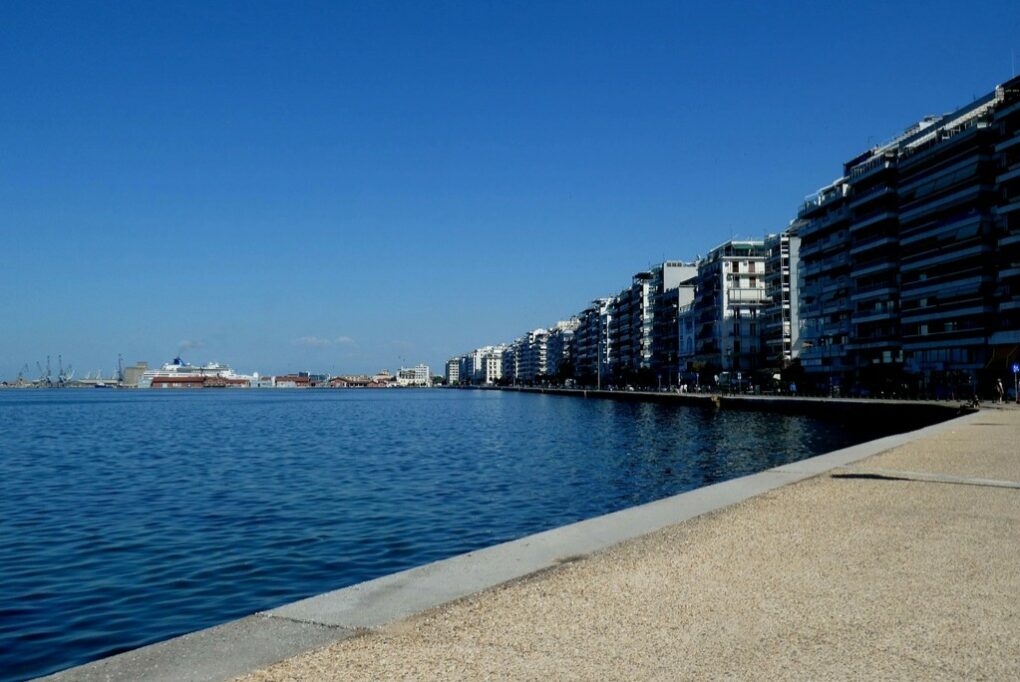
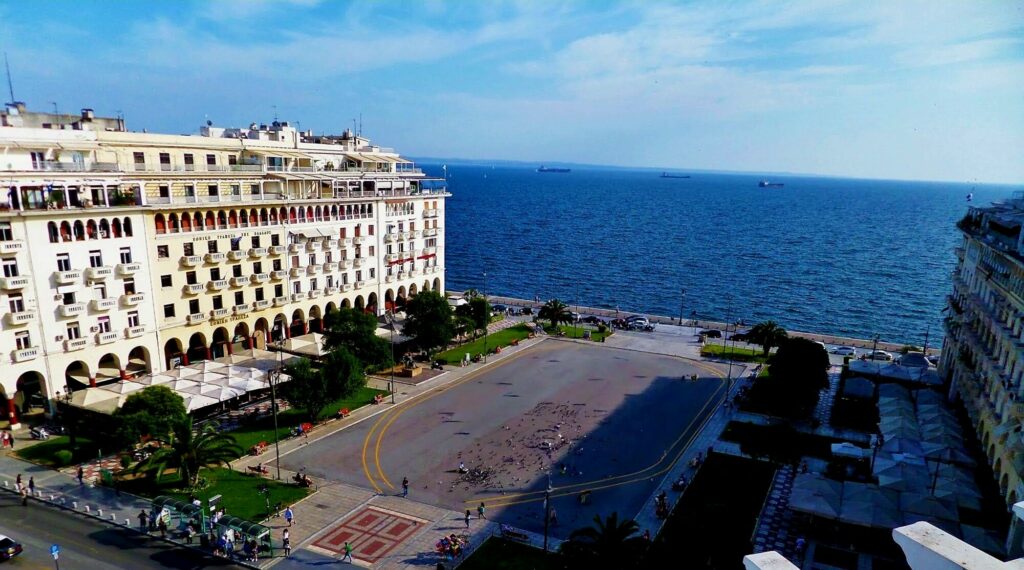
Byzantine Walls
The Byzantine Walls of Thessaloniki are among the city’s most significant historical monuments, offering a glimpse into its past as a major Byzantine stronghold. These ancient fortifications were built during the early Byzantine period and were crucial in defending the city against various invasions.
The most well-preserved sections of the walls can be found in the Upper Town (Ano Poli), where they provide stunning views over Thessaloniki and the Thermaic Gulf. Walking along these ancient walls, you can almost feel the history that has unfolded here over the centuries.
The walls are punctuated by several towers and gates, each with its own historical significance. One of the most notable is the Trigonion Tower, which offers some of the best panoramic views of the city. The Heptapyrgion, or “Yedi Kule” in Turkish, is another important structure, originally built as a fortress and later used as a prison.
Exploring the Byzantine Walls is a must for history enthusiasts, offering a tangible connection to Thessaloniki’s rich past and a chance to enjoy some of the best vistas in the city.
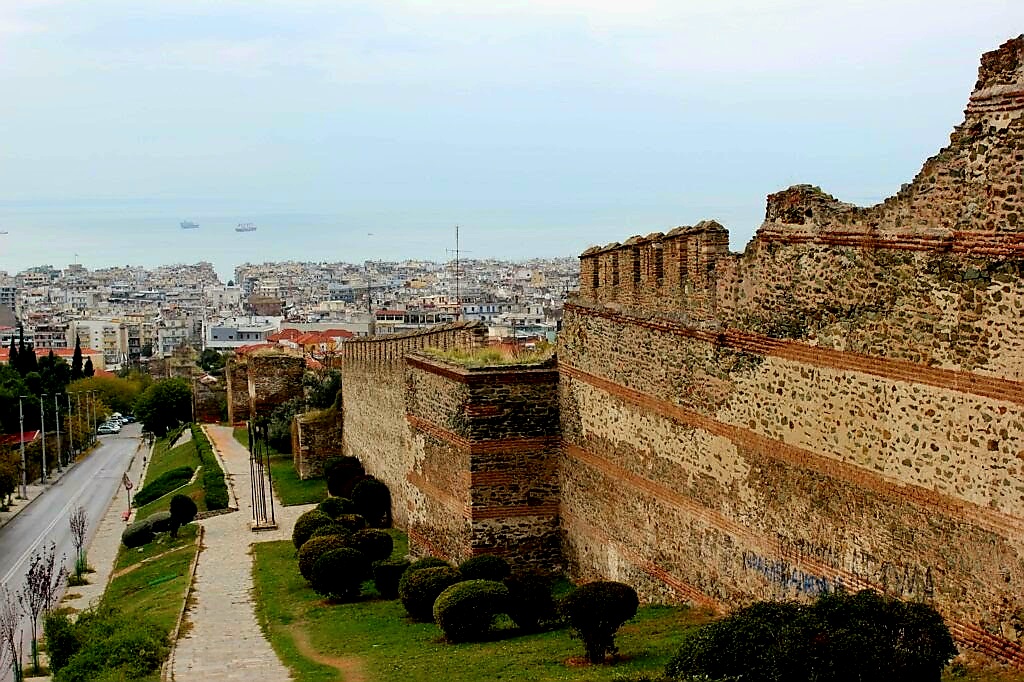
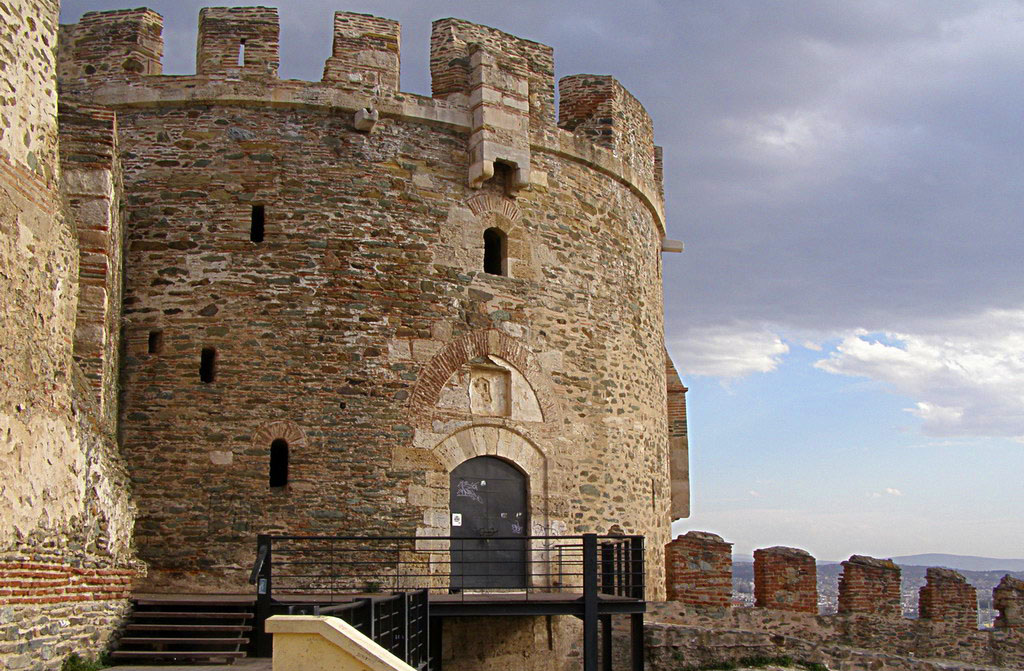
Modiano and Kapani Markets
Modiano and Kapani Markets
For a taste of local life and authentic Greek flavors, a visit to the Modiano and Kapani markets is essential. These bustling markets are located in the heart of Thessaloniki and offer a sensory overload of sights, sounds, and smells.
Modiano Market: Housed in an impressive early 20th-century building, Modiano Market is a maze of narrow alleys lined with stalls selling fresh produce, meats, fish, spices, and traditional Greek delicacies. It’s a great place to experience the vibrant atmosphere and pick up some local ingredients or snacks.
Kapani Market: Just a stone’s throw away, Kapani Market is one of the oldest markets in Thessaloniki. Here, you’ll find a similar array of fresh food items, as well as household goods, clothing, and more. The market’s lively ambiance and friendly vendors make it a joy to explore.
Both markets are perfect for those who want to immerse themselves in the local culture and enjoy the bustling life of Thessaloniki. Don’t forget to try some of the local specialties, such as olives, cheeses, and freshly baked bread.
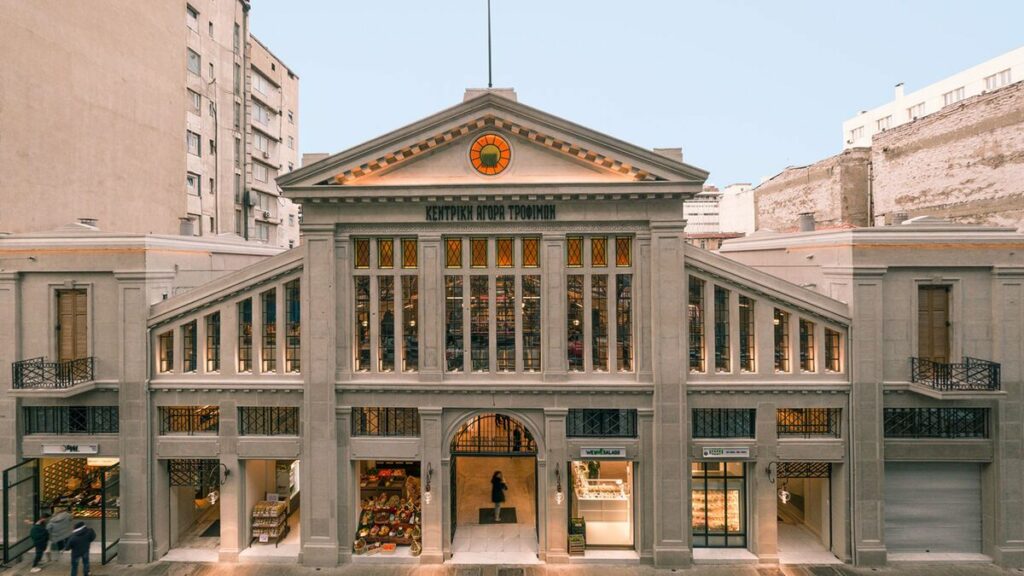
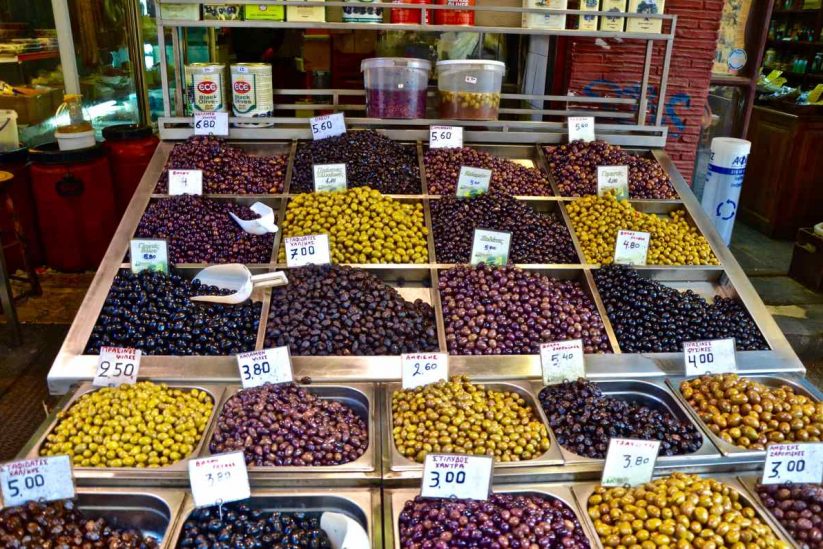
Greece Travel Guides
Greece Travel Stories
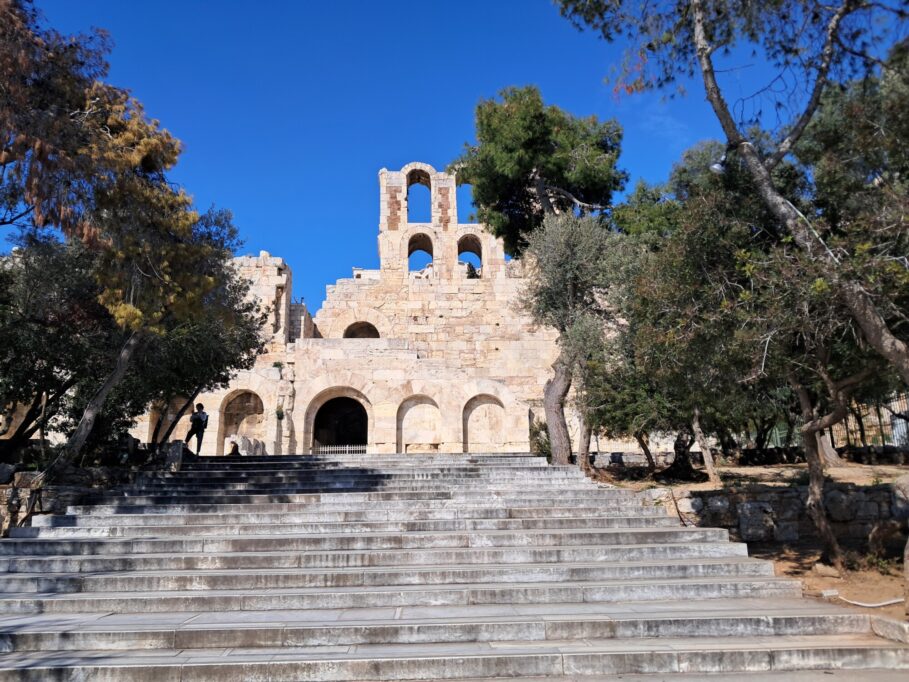
Amazing Days in Athens – Returning to One of Our Favorite Cities
GREECE Returning to One of Our Favorite Cities: Athens Returning to one of our favorite cities, we spent a few wonderful days in Athens, soaking
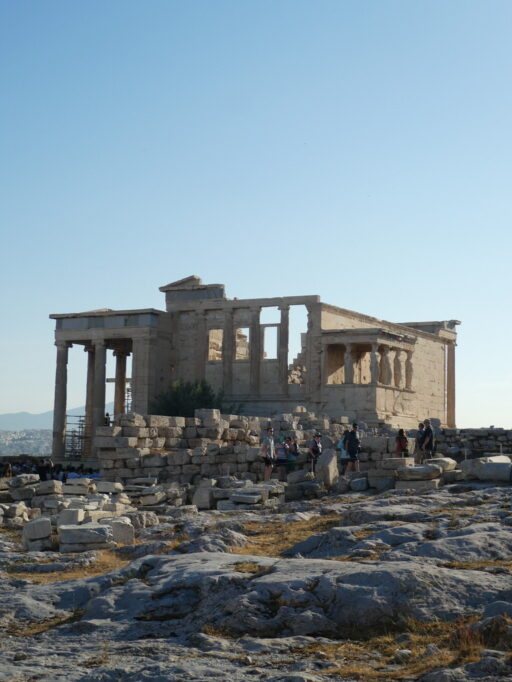
A Wonderful Week In Athens: Travel Stories From Greece
ATHENS GREECE A WONDERFUL WEEK IN ATHENS GREECE Athens charmed us with its history, delicious food, and vibrant streets. From exploring the Acropolis and the
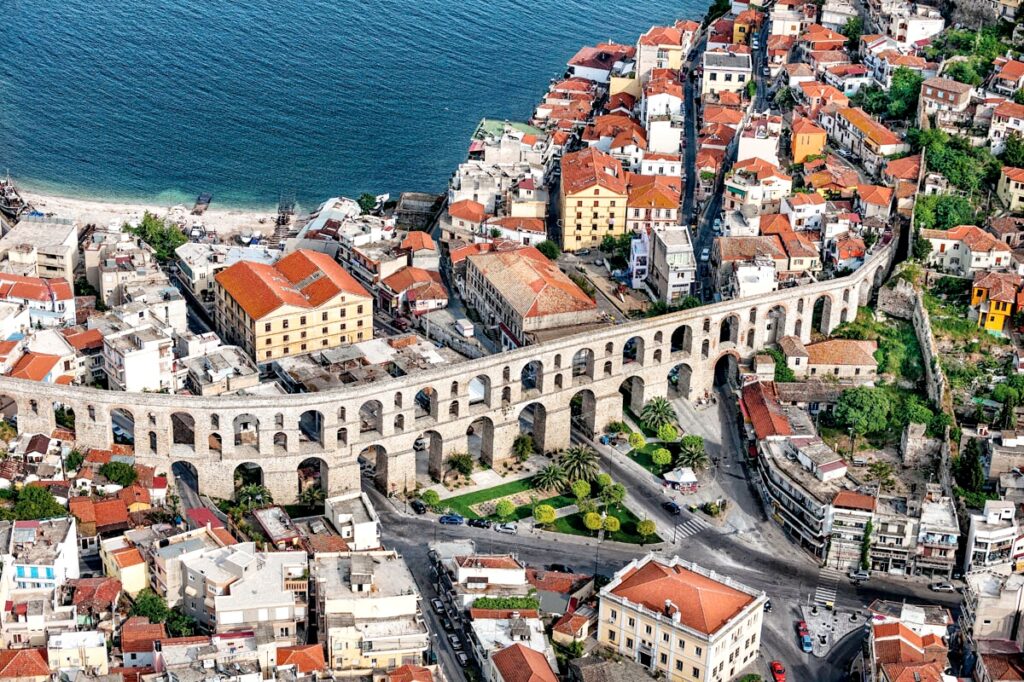
A Month In Kavala Greece – The Ultimate Guide
KAVALA GREECE Experience the vibrant culture and rich history of Kavala, Greece, through our stories. From ancient Roman landmarks to modern-day coastal charm, explore this
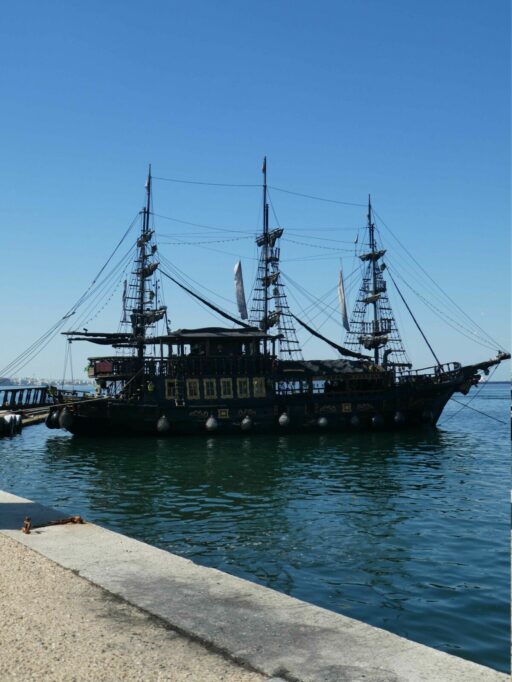
Two Days In Thessaloniki – The Ultimate Guide
TWO DAYS IN THESSALONIKI GREECE Two Days and Three Nights in Thessaloniki: We explore the stunning water front, wander the back streets and dine on
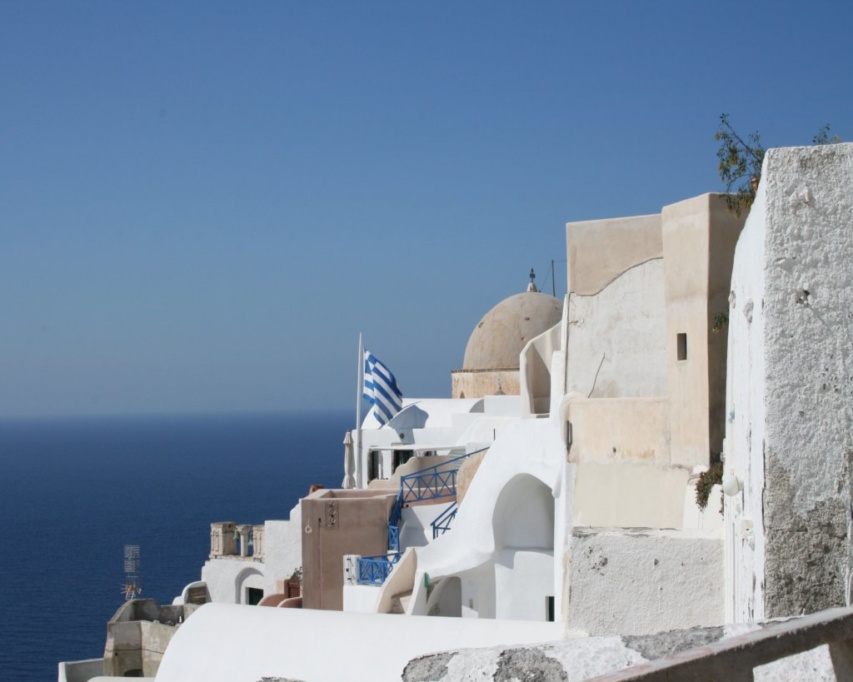
Santorini & Samos Greece – The Ultimate Guide
SANTORINI & SAMOS GREECE TRAVELLING TO SANTORINI AND SAMOS: TWO STUNNING GREEK ISLANDS IN THE AEGEAN SEA. Greece Travel Guides Greek Islands Travel Guides
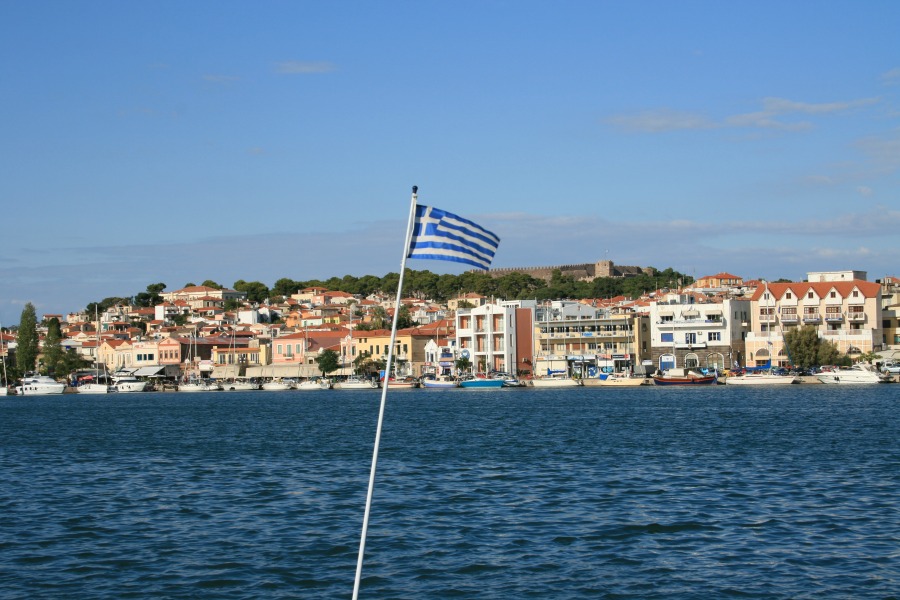
Lesbos Greece – The Ultimate Guide
LESBOS GREECE LOVELY LESBOS: WE WENT FOR 2 NIGHTS AND STAYED FOR 10 DAYS – THE HOME OF OUZO AND DAMN GOOD FOOD Greece
